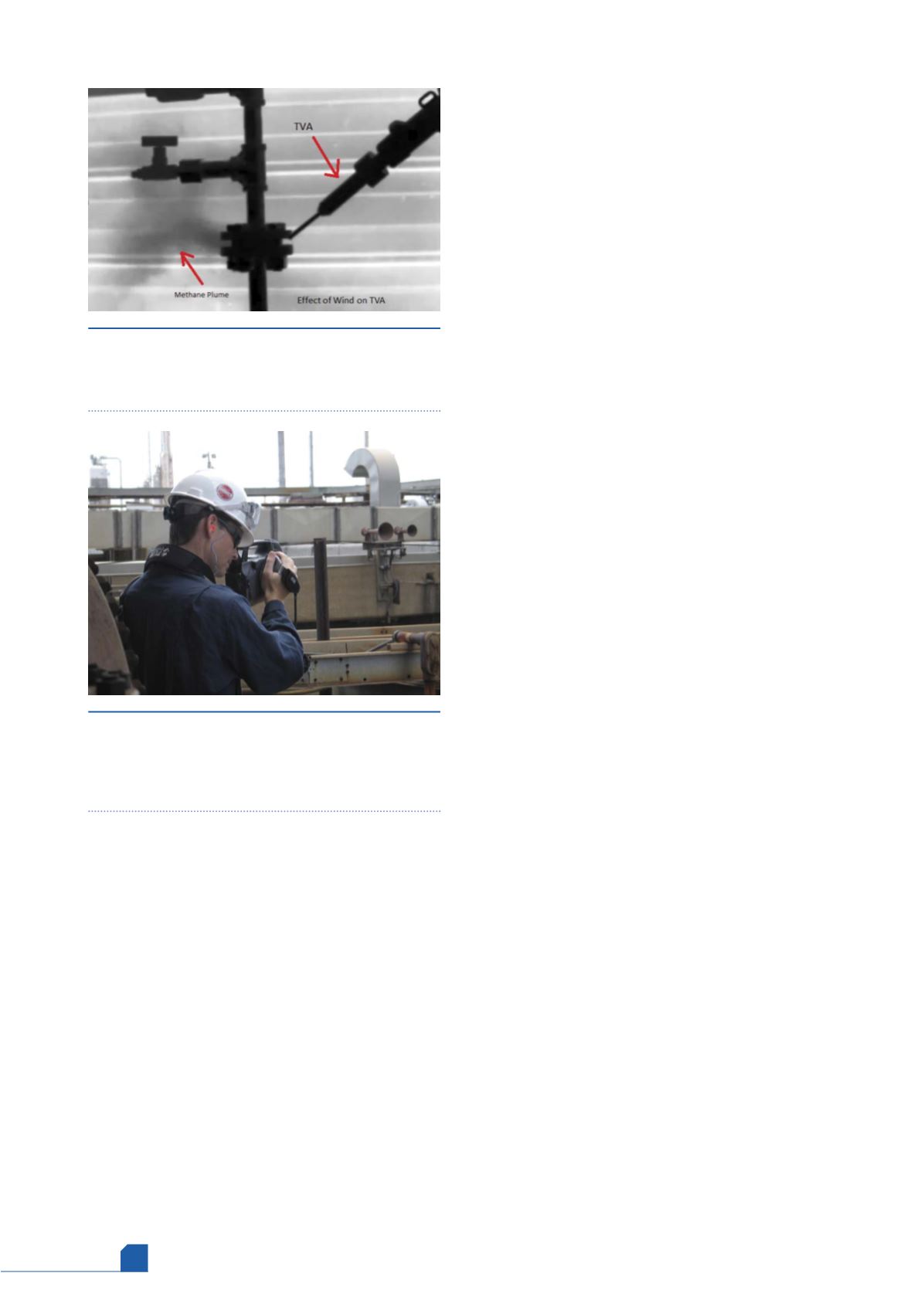
July
2020
HYDROCARBON
ENGINEERING
64
Implications of safety equipment for
culture
Many common safety practices depend upon equipment
that operates solely within an area of relative unsafety.
Both wearable and handheld gas monitors play an
important function in protecting workers, but only warn of
a danger once the person with the monitor is standing in a
cloud of gas. There are several other technologies that
allow operators to find an unsafe condition within a piece
of equipment, but few of these operate until the user is
within that unsafe condition. These technologies – and
the close proximity required for their use – could send a
cultural message that some risk is acceptable (and perhaps
inevitable), contradicting the message of safety.
Just as certain safety tools carry an apparent
inevitability of personal risk, so do some routine safety
tasks. A prime example is the practice of tank gauging.
Employees must scale a ladder and walk out on a catwalk
in order to extend a dipstick into the liquid. The worker
stands directly over a tank, where a potentially high
concentration of gas emissions may lurk undetected, and
drops a ‘stick’ or device into the tank to gauge the level of
product inside the tank.
Downstream, the risk profile changes. Many of the
hydrocarbon gases in refineries are more toxic (and in
more confined spaces) than those present at upstream
facilities. As a result, an employee who unknowingly enters
an unsafe area could face more pronounced negative
consequences, or more negative effects in less time. A
prominent method for detecting unsafe gas levels in this
context are wearable and handheld gas monitors.
Even the most common safety monitoring equipment
invites a level of uncertainty. If a wearable gas detector
begins to beep, there are still a number of important
questions to answer. Is the wearer at the edge of a gas
cloud or at its centre? In which direction should the
wearer go to get out of the hazardous area? What is the
exact location of a leak? While these technologies may be
good at detecting the presence of gas, they have their
drawbacks.
The next move
Historically, OGI has been viewed through the lens of
compliance. Regulatory parameters surrounding emissions
must be met, so companies invested in these resources to
identify emission sources and repair them. Increasingly, oil
and gas leaders are adopting strategies to voluntarily
reduce emissions to stem climate change. The CEO-led
Oil and Gas Climate Initiative, for example, includes
12 major corporations. Concawe carries out research over
environmental issues including health and safety, and its
membership has broadened in recent years to include most
oil companies operating in Europe. Further, in the US, the
ONE Future Coalition has set a goal to reduce emissions to
1% by 2025 across the natural gas supply chain. OGI
provides an effective and efficient measurement
technology for many gases targeted by these efforts. In this
way, it contributes to both operational safety and
safeguards the environment. Companies continue to find
that safety pairs not only naturally with environmental
stewardship but also advantageously. In many cases, OGI
cameras can help oil and gas companies meet their
stewardship metrics while also creating a positive return on
investment (ROI), both by keeping gas in the pipes and
reducing potentially disastrous expenses due to a safety
failure.
Utilities and oil and gas companies have begun
inspecting components with OGI that do not fall under
regulatory requirements to reduce emissions at more
points. A partial driver of this broader role is a major
advancement in the technology with cameras certified to
be used in hazardous locations. Class 1; Division 2 or
Zone 2 rated imaging devices such as the FLIR GFx320 are
certified by a third party and compliant to be used in
locations deemed to be hazardous. This distinction has
led organisations to rethink the relationship of safety
equipment to personnel in these locations. Traditionally,
the OGI camera would be used primarily by a leak
detection and repair (LDAR) team. Other departments,
such as the environment, health, and safety (EHS) team,
might have access to the technology throughout
Figure 1.
Image of a component leaking that is visible
by an optical gas imaging (OGI) camera but could be
missed by alternative technologies, such as a TVA or a
sniffer.
Figure 2.
Independently certified for use in Zone 2 or
Class 1; Division 2 hazardous locations, OGI devices
such as the FLIR GFx320 can provide a more efficient
and easier tool for troubleshooting safety and
operations issues.








